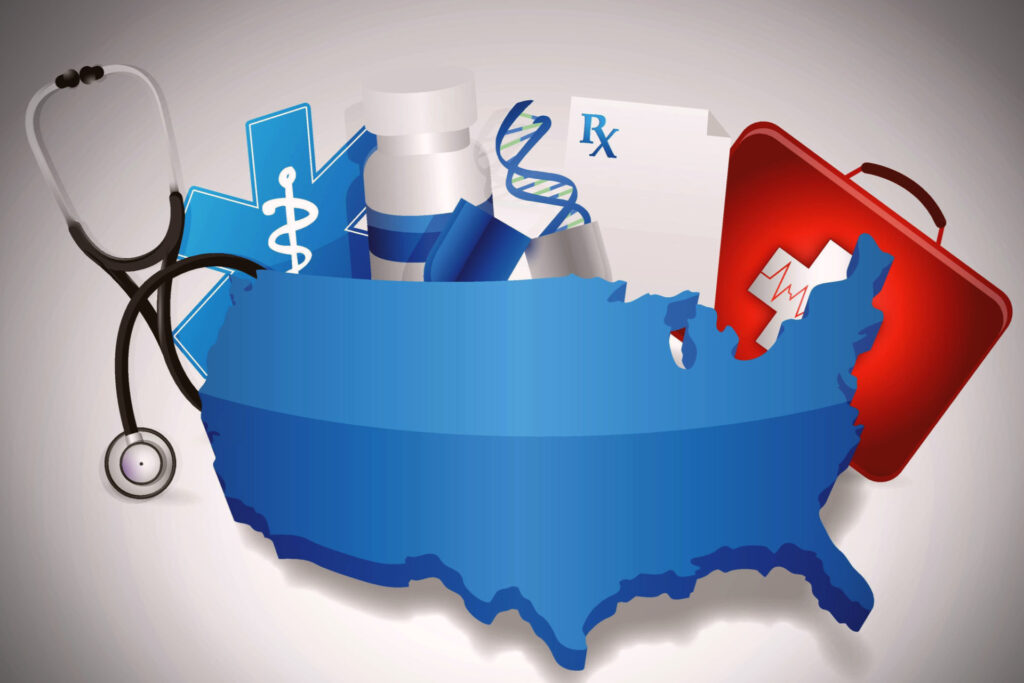The biggest health insurance mysteries, how to decode them – CBS Detroit

(CNN) — Whether you’re getting kicked off your parent’s health insurance plan or have been doing open enrollment for years, navigating health insurance jargon can be daunting.
Information about a plan’s coverage isn’t always transparent. Nor is there one right answer, since the best plan for you can depend on your health status and needs, said Dr. Renuka Tipirneni, an assistant professor of internal medicine at the University of Michigan Medical School.
“It’s confusing for me, and I’m somebody who focuses on health insurance policy,” Tipirneni said. “But I’ve also received a surprise bill myself. So, I think it’s really important to stay informed and then to recognize we’re all going to make these honest and easy mistakes, and then reach out for help when that happens.”
Not understanding your health insurance can have consequences, including the possibility of being faced with unexpected or unaffordable costs, Tipirneni said. You might even avoid getting care if you’re not sure how much you’ll have to pay.
Here are some common mysteries regarding health insurance, and what to know to get the care you need.
1. When you can sign up
Why can’t you enroll in health insurance anytime you want?
“Insurance companies don’t want to have people signing up when they get sick,” said John Holahan, an institute fellow in the Health Policy Center at the Urban Institute in Washington, DC.
“Open enrollment is to protect the insurance company against what’s called adverse selection — in other words, people selecting insurance right at the time they need care, like buying homeowners insurance when your house is on fire,” Holahan said.
Open enrollment periods usually happen between fall and early winter, Tipirneni said. Typically, you can also sign up during certain life events such as losing insurance, moving, marriage, having a baby, adopting a child or if your household income drops below a certain amount.
If you have a low enough income to qualify for Medicaid — United States government-funded insurance — you can enroll at any point, Tipirneni said.
2. Premiums versus claims
Some people are confused by the difference between premiums and claims. Premiums are the monthly fee you must pay to have health insurance at all — even if you never take advantage of your plan by getting medical care or medications, Tipirneni said.
A claim is the bill a health care provider sends the insurance company so the company will cover its portion of the health care service, Tipirneni said. Sometimes the provider will require you to submit the claim to the insurance company.
3. Deductibles
A deductible might sound like a discount, but it’s not. It’s the amount you have to pay out of pocket for health care before your insurance coverage kicks in, Tipirneni said.
Deductibles usually start in January. If you have a $1,000 deductible for the year, you will have to pay the full cost of any medical care until you’ve reached $1,000. One doctor’s visit might not cost that much, so reaching deductibles could take months. If you seldom see doctors, you may not reach the deductible before year’s end.
High deductible plans are popular since they’re often paired with low monthly premiums. They can look very attractive since they appear to have the lowest upfront cost, but you might actually end up paying more, Tipirneni said. For example, if you have a $3,000 deductible plan but don’t meet your deductible by year’s end, you will have paid the full costs of all the health care you received plus the monthly premiums.
“Sometimes it’ll end up being more total out-of-pocket costs for you than it would have been if you had gotten a slightly higher premium and a lower deductible,” Tipirneni said.
If you’re young and healthy and don’t have any health conditions or prescriptions, a higher deductible plan might make sense for you, Tipirneni said. If you have one or more health conditions, expect multiple doctor visits or have prescribed medications, a lower deductible plan could be better.
There isn’t a universal rule for how many anticipated medications and appointments would necessitate getting a lower deductible plan — especially since healthy people can have unexpected health needs such as car accidents or sporting injuries.
“All you can do is make your best guess of how much health care you’ll be using in the next year,” Tipirneni said.
4. Copayments
After you’ve met your deductible, you’ll typically pay a copayment with each doctor visit — a flat fee determined by the type of insurance you buy. The rest of the bill is usually covered by insurance.
Different services such as physician visits and therapy appointments can have varying copays, since insurance plans cover different portions of each service, Tipirneni said.
Out-of-pocket costs are an umbrella term for everything you pay besides the premium, Tipirneni said — so, the copays, deductible, coinsurance and maybe more.
Some insurance companies may require you to also pay for coinsurance, a percentage of the bill you pay even after you’ve met your deductible, while the insurer handles the rest.
Some policies have out-of-pocket maximums, which limit the total expenditures you have, Holahan said.
5. What’s covered
Knowing which services are covered by a plan can be confusing since that can change yearly, Tipirneni said.
All plans have a list of covered benefits that are included in a handbook or other information provided upon enrollment, Tipirneni said.
Sometimes plans don’t cover certain conditions or problems you think they do, Holahan said. For example, a plan might cover a hearing exam but not hearing aids.
“If you’re not sure, call the number on your health insurance card to talk to your health plan and ask them how much this will be or whether it’s covered,” Tipirneni said.
6. What’s in and out of network
An in-network health care provider has predetermined agreements with your insurance company on what they can charge for their services, while an out-of-network provider doesn’t have such a contract.
“If there are physicians and hospitals that are really important to you, then you might want to choose the plan that has those in network,” Holahan said.
Online provider directories or networks posted by insurance companies can help you see if your current doctor is already in network.
If you have an important prescribed medication, check your plan’s drug formulary, which is the list of medications partially or fully covered by the insurance. The extent to which a plan covers certain services or medications can change, so check this every year, Tipirneni said.
Insurance plans might cover out-of-network providers to a degree, but usually a lot less compared with what they’ll cover for in-network providers, she added.
This can be an issue if you need to see a specific specialist or are away from home. If you have time before traveling, ask your health insurance company if there are in-network providers or hospitals in your destination so you can pay less for any unexpected care, Tipirneni said.
7. Explanation of benefits
If you receive an “explanation of benefits” statement and aren’t sure what that is, relax — it’s not a bill. It’s just an overview of which parties are paying what.
If you do get a surprise bill — for example, a surgery that involved multiple providers, some of whom you didn’t know were out of network — Tipirneni recommends you appeal that bill with your insurance company or the hospital.
“Usually with those conversations, you can negotiate the amount down,” she said. “There has been some legislation passed — and I think more is coming, hopefully — to try to make that happen less often and for that to be more transparent so people can make those decisions about where to go to procure care in a more informed way.”
Other resources
If you need more help, health insurance navigators can help you determine which plan is right for you. Health insurance agents can do the same, but they might have an incentive to offer some plans versus others, Tipirneni said.
If you’re enrolling in government health insurance, you can talk with staffers who would help you figure out whether you’re eligible in the first place. The Affordable Care Act website has search functions for getting local help.
If you’re enrolling in work-provided health insurance, a human resources staffer might be able to explain the plans or give you materials, Holahan said.
“The more you can try to do your upfront homework when picking a plan, and if you need to get care the better informed and set up you will be, to hopefully not pay more than you should be,” Tipirneni said.
This content was originally published here.




Responses